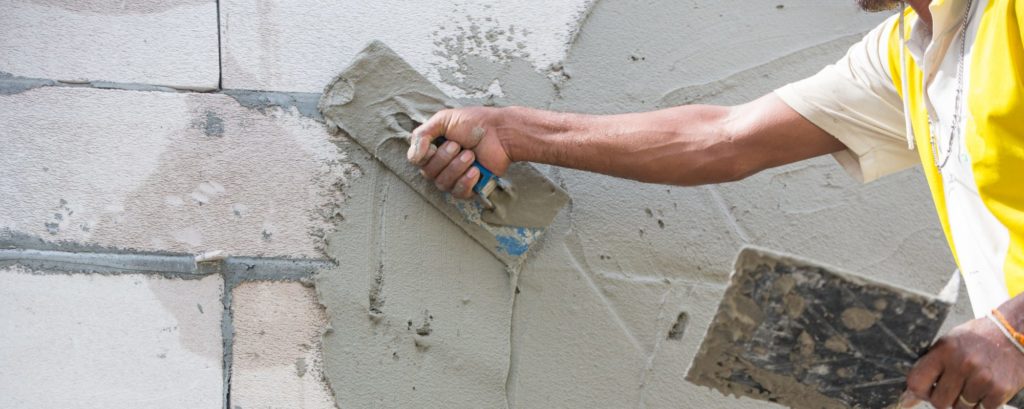Plastering Keys: Boost Your Inside with a Perfect Wall Surface Complete
Plastering Keys: Boost Your Inside with a Perfect Wall Surface Complete
Blog Article
A Comprehensive Guide to Mastering Plastering Skills for Your Remodelling Requirements

Necessary Devices and Materials
Numerous necessary tools offer unique objectives, making sure efficiency and accuracy throughout the plastering procedure. A premium trowel, for circumstances, is crucial for smoothing and applying plaster, while a hawk gives a steady system for holding the material.
In enhancement to devices, choosing the appropriate plastering materials is crucial. Gypsum-based plasters are typically liked for their versatility and simplicity of usage, while cement-based options are suitable for exterior applications because of their durability. Water and bonding agents play significant functions in attaining proper consistency and attachment, ensuring that the plaster adheres properly to the surface area.
Additionally, protective equipment such as gloves, goggles, and masks is vital to guard versus dirt and irritation during the application process. By setting up the appropriate mix of materials and tools, plasterers can enhance their ability and create high-grade finishes, ultimately raising the general craftsmanship of their work.
Preparing Surface Areas for Smudging
Attaining a smooth and resilient plaster coating starts with meticulous preparation of the surface areas to be glued. This fundamental action is crucial to making certain adhesion and the longevity of the plaster. Start by evaluating the condition of the substratum-- whether it is drywall, concrete, or stonework-- eliminating any kind of loose paint, dust, or particles that might hinder bonding.
Following, fix any kind of blemishes such as fractures or holes. Make use of an appropriate filler to accomplish a level surface area; this can be critical for protecting against future problems. When repaired, make certain the surface area is completely dry and tidy, as dampness can endanger plaster adherence.
For permeable surfaces, it is a good idea to use a bonding agent. This item improves attachment and produces a trustworthy interface in between the plaster and substratum. If dealing with previously plastered surface areas, it may be necessary to mess up or sand the area gently to supply a key for the brand-new plaster layer.
Plastering Strategies and Tips
Mastering smudging techniques needs both ability and practice to accomplish a remarkable finish. One vital strategy is the application of the plaster in multiple thin layers, instead than a solitary thick coat.
When applying the surface layer, employ a troweling method that entails holding the trowel at a slight angle and operating in a round activity. This helps to produce a smooth surface area and lowers the appearance of trowel marks. Furthermore, maintain a spray container of water convenient to mist the surface lightly; this maintains the plaster practical and allows for smoother completing.
Timing is crucial; work efficiently, as the plaster begins to set. When the plaster has actually tightened however is still wet, utilize a damp sponge to carefully smooth the surface area additionally. Last but not least, permit adequate drying time Discover More Here before sanding or painting, ensuring your hard job results in an expert, high-grade coating.
Usual Blunders to Stay Clear Of

One more typical mistake is using plaster as well thickly. Overzealous applications can result in splitting and extended drying out times. It's necessary to use plaster in slim, also layers, permitting each layer to completely dry appropriately prior to including more.
Additionally, not making use of the right devices this post can prevent the top quality of the coating. Making use of unsuitable trowels or mixers can create inconsistencies in the plastering process. Always go with high-quality devices made for smudging jobs.
Finally, lots of individuals undervalue the significance of timing. Functioning in inappropriate temperatures or humidity levels can adversely affect plaster healing and drying out. It is a good idea to inspect climate condition and adapt your routine appropriately.
Ending Up Touches for a Specialist Look
The final phases of a plastering job are important for achieving a sleek, expert appearance. Once the plaster has dried adequately, the next step is to evaluate the surface for flaws.
After sanding, it's advisable to cleanse the surface to eliminate any kind of dirt and debris. A moist towel works for this objective, followed by a detailed drying period. If needed, using a thin layer of completing plaster can improve the surface area further, supplying a smooth surface.
When the ending up plaster is completely dry, another round of fining sand might be called for to achieve the preferred level of smoothness. Ultimately, consider applying a guide before painting or wallpapering, which will certainly enhance adhesion and sturdiness.
Conclusion
Grasping plastering abilities considerably improves the top quality of improvement projects. A comprehensive understanding of necessary devices, surface area prep work, and reliable techniques is essential for accomplishing expert outcomes. Recognition of usual blunders allows for the avoidance of costly errors, while attention to completing touches guarantees a refined look. Inevitably, the see this website assimilation of these components adds to the production of smooth, long lasting surface areas that raise the visual worth of any kind of room, emphasizing the relevance of competent plastering in home enhancement ventures.
Water and bonding representatives play significant functions in achieving appropriate uniformity and bond, making certain that the plaster adheres properly to the surface. Plastering.


Additionally, maintain a spray bottle of water handy to haze the surface gently; this keeps the plaster convenient and allows for smoother ending up. (Plastering)
If required, using a thin layer of ending up plaster can improve the surface area even more, giving a seamless coating.
Report this page